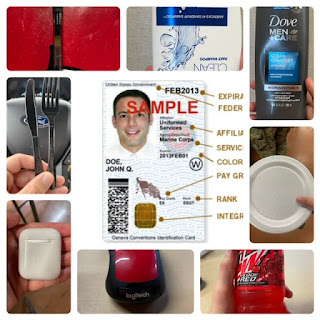|
Davis, C.B.,
& Lewicki, R.J., 2003 |
Bryan, T., 2003 |
Turning the
world upside down: how frames of reference shape environmental law. (James
Salzman and Martin Doyle, 2014) |
|
Identity: The concept of identity focuses on how individuals answer the question, “Who am I?” |
Demographic:
Characteristics
of a population like age, sex, religion, and gender.
|
Reference line Frames:
Law is
considered binary. Your either in or out of the law in which it binds to. The
government cannot force anything beyond the court. |
|
Characterization:
Statements that
are made by individuals on how they understand others to be. |
Legal:
Consists of
laws, regulations, legal procedures, and court decisions.
|
Fluid Dynamics:
How people get answers
from differing issues that can differ from multiple ways to conduct several
different studies that can be executed. |
|
Conflict-management:
Focuses on how
disputants’ preference for how the conflict management process should be
managed.
|
Political:
Characteristics of
the political processes and institutions in a society, such as general form
of government.
|
|
|
Fact-Finding:
How technical
experts see and approach their roles in environmental disputes. |
Economic:
Prosperity within
an economy which range from inflation, interest rates, tax rates, and as well
as labor, capital markets, and economic market. |
|
|
Social Control
Frames:
Represents on
how an individual views about how decisions regarding social issues should be
made. |
Cultural:
Consists of the “predominant
values, attitudes, beliefs, social customs, and socialization. |
|
|
Power frames:
Explore the ways
that individuals can gain power.
|
|
|
|
Risk-Frames:
Risks that are associated
with environmental hazards or actions. |
|
|
My
Political Frame
|
Identity:
How
an individual feels towards are certain issue because the demographic they
may fall under like age, sex, race, gender, and religion. Identity helps
answers the question “Who am I” |
|
Fact
Finding: Research
that is necessary to find all facts of the situation that can be presented in
order to convince someone why an issue has importance. |
|
Reference
Line Framing: A boundary
that is set in where the government can operate in and is only allowed
movement in which the courts give them. |
|
Risk:
Every
action that is take a risk assessment must be taken to identify potentials hazards
or actions. |
|
Political: Where
issues are brought to demand some type of change from the government. |
Identity:
I believe identity is important because it gives an
understanding why someone views things a certain way. Identity can be race, age,
gender, religion, political affiliation, and sex. These categories are
important when it comes to implications of environmental policy. Age and party affiliation
is one of two factors that stick out to me because in today's world its crucial piece of identity that usually goes hand and hand with each other.
Fact-Finding:
Fact-finding is an important frame that needs to be used
because it helps create solid evidence that can be used to educate others. Fact-finding
also replaces false information that was created to discredit something that is consider bias to stop a passing of an environmental policy.
Reference Line Framing:
Reference line framing is important because it places
everyone within the law and the government can only enforce that law in were the courts set the boundaries of the law. This allows individuals to feel some since
of security knowing that the government can only act within the law and not out
of it.
Risk Framing:
Risk Framing shows us the risk that comes with certain laws and
policies that may have an impact on the environment and economy. Risk should be associated with
everything we do when it comes within the environment. No matter what happens something
is going to be affected and all avenues must be looked at so that we know what
course of actions is the best going forward.
Political Framing:
The last one I have is political framing because I believe
most things are politically motivated regardless of the party someone falls
under. Almost every environmental issue old or new was created through political
means in which people were able to convince a certain demographic within the government to take action and
demand change throw political means.
Cited Work:
Bryan, T. (2003). Context in
environmental conflicts: Where you stand depends on where you sit.
Environmental Practice, 5(3), 256-264.
Davis, C. B., & Lewicki, R. J. (2003).
Environmental conflict resolution: Framing and intractability--an introduction.
Environmental Practice, 5(3), 200-206.

